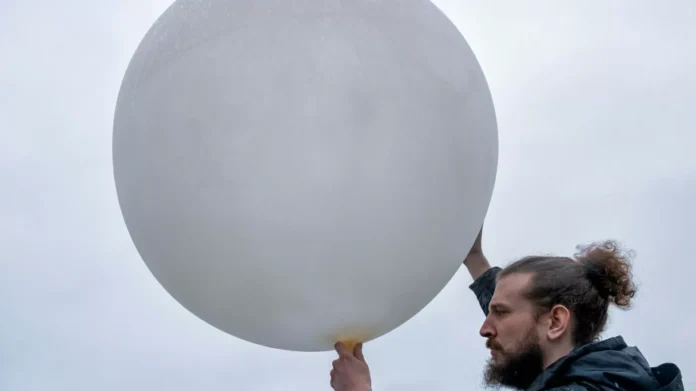The Trump Administration has recently announced a pause on weather balloon launches in at least three locations due to staffing shortages. This decision has caused concern among weather experts and the public, as these balloon launches play a crucial role in collecting important weather data.
According to the administration, the suspension of launches will take place in Albany, New York, and Gray, Maine, due to a lack of Weather Forecast Office (WFO) staffing. This comes as a surprise to many, as the National Weather Service (NWS) has been consistently praised for its accurate weather predictions and reliable data collection.
The NWS has been using weather balloons for over a century to gather vital information about the atmosphere. These balloons, also known as radiosondes, carry instruments that measure temperature, humidity, air pressure, and wind speed as they ascend through the atmosphere. The data collected from these balloons is then used to improve weather forecasting models and provide accurate weather forecasts to the public.
The NWS has a network of 92 weather forecast offices across the country, each responsible for launching weather balloons twice a day, every day of the year. However, with the recent staffing shortages, the administration has been forced to pause some of these launches, causing a gap in the data being collected.
This decision has raised concerns among meteorologists and scientists, who rely on this data to make accurate weather predictions. “Weather balloons are a critical component of our forecasting system. Without them, we will have significant gaps in our data, which will ultimately affect the accuracy of our forecasts,” said one meteorologist.
The NWS has assured the public that they are working to address the staffing shortages and resume the balloon launches as soon as possible. In the meantime, they have implemented alternative methods to gather weather data, such as using ground-based instruments and satellite imagery. While these methods are helpful, they do not provide the same level of accuracy as the data collected from weather balloons.
The decision to pause these launches has also sparked discussions about the importance of funding and resources for the NWS. The organization has been facing budget cuts in recent years, which have led to the reduction of staff and resources. This has put a strain on the NWS’s ability to carry out its duties effectively.
The Trump Administration has recognized the issue and has vowed to work towards finding a solution. In a statement, they said, “We are aware of the challenges faced by the NWS and are committed to finding a long-term solution to ensure the proper staffing and resources are available to carry out their important work.”
It is crucial that the NWS receives the necessary support and resources to continue its vital work. The accuracy of weather forecasts affects not only our daily lives but also industries such as agriculture, transportation, and emergency management. Without reliable weather data, these industries can suffer significant losses and disruptions.
In conclusion, while the pause on weather balloon launches may cause some concerns, it is essential to trust that the NWS and the Trump Administration are working towards a solution. Weather forecasts are an essential tool in our daily lives, and it is crucial that we support the organizations responsible for providing us with this valuable information. Let us hope for a quick resolution to the staffing shortages, so we can continue to receive accurate weather forecasts and stay prepared for any weather conditions.

